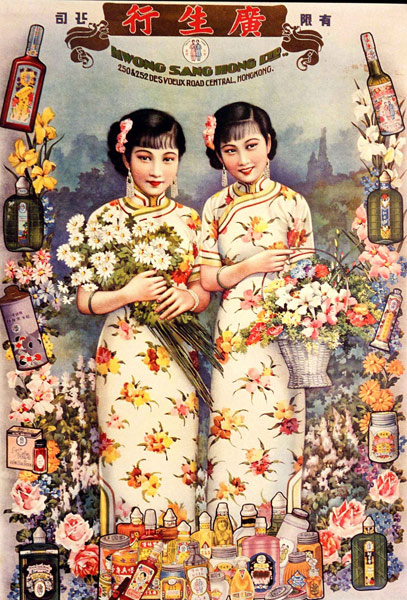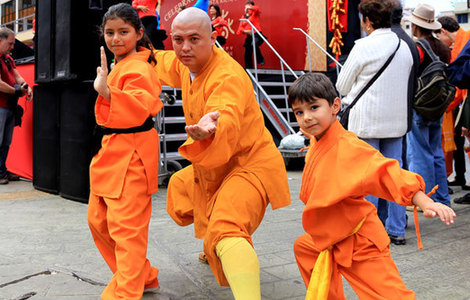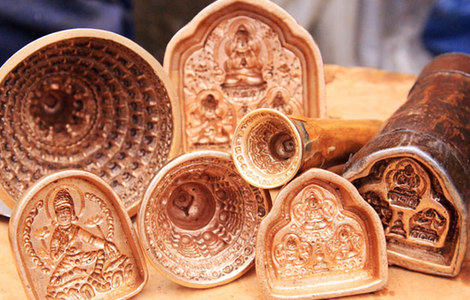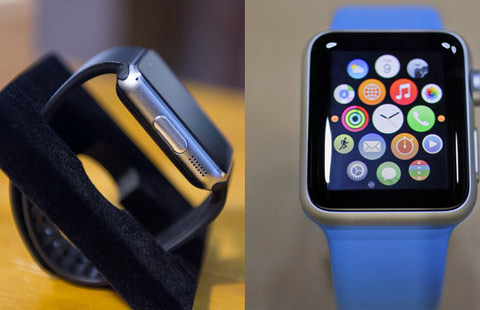Golden oldies still shine in modern times, some brighter
Updated: 2015-03-13 13:00
By Wang Ying in Shanghai(China Daily USA)
|
||||||||
 |
|
Shanghai Vive, a cosmetics brand with an iconic logo featuring two women, was relaunched in 2010. It is over a century old. |
Encouraged by the success of its two stores in Sydney and New York, it will soon open another branch in Vancouver. Three more are due to open in Hong Kong this year. Others in the UK and New Zealand are in the pipeline.
Based on Wang's calculations, annual revenue of 10 billion yuan from its overseas markets is a realistic target within five years.
"It is so exciting that Chinese jeweler Shanghai Lao Feng Xiang has continued their overseas expansion by opening a brand new store in New York," said Liu Yi, consul for economic and commercial affairs at the Chinese Consulate General in New York.
"They know the value of having a Fifth Avenue presence, not to mention one in such close proximity to the Diamond District. I appreciate Lao Feng Xiang's entrepreneurial spirit and have full confidence in their products," she said.
Liu told China Daily that with the joint efforts of management team, the success and glories of Lao Feng Xiang in Shanghai will be continued here. "And we are hoping to see more China's Time-Honored Brands in New York," she said.
Sink or swim
Despite this, many brands are losing their luster. Only about 10 percent remain profitable. Some 70 percent can merely make ends meet, while two in 10 have closed down after years in the red, according to a city survey.
"Broadly speaking, whether we admit it or not, most of the city's aged brands are going down due to poor advertising choices and a lack of innovation," said Jiang.
Most have followed the same basic business curve: They were nationalized after 1949, when modern China was born, they peaked in the 1950s or 1960s, experienced a slump the following decade, then saw business pick up again in the 1980s.
Their performances began to diverge after new domestic brands joined the market along with mature global brands.
According to Jiang, the old brands once boasted the latest technology and most sophisticated techniques but have since failed to keep pace with the changing times.
Public information shows there were more than 16,000 old brands across the nation in 1950. This number dwindled to 1,600 in 1990. As of 1996, only a few hundred were recognized as time-honored brands by the Ministry of Commerce.
Beijing-based Wangmazi Scissors used to be an industry leader in China but the brand, which is over 350 years old, went bankrupt in 2003 after it found itself saddled with debt.
Varying business models saw the brands follow different development paths during the 1980s and 1990s.
"Every success story is unique, but they were all based on prudent decision-making by their management in an ever-changing business environment," said Jiang.

 Bruce Lee's legacy promotes Kungfu in LatAm
Bruce Lee's legacy promotes Kungfu in LatAm
 Germany's Black Forest: a popular holiday destination
Germany's Black Forest: a popular holiday destination
 Sea of color at Shenzhen race
Sea of color at Shenzhen race
 Taking the fight to the terrorists
Taking the fight to the terrorists
 Historical images of 'two sessions'
Historical images of 'two sessions'
 How expats celebrated Chinese Spring Festival in 2015
How expats celebrated Chinese Spring Festival in 2015
 Sacred craft dwindles
Sacred craft dwindles
 Apple Watch clones clock big hit in market
Apple Watch clones clock big hit in market
Most Viewed
Editor's Picks

|

|

|

|

|

|
Today's Top News
Li: Mutual respect, interests key to China-US relations
Foreign investment restrictions
to be cut
Taking the fight to the terrorists
China: Action to be taken if deadly bombing happens again
New bureau set to boost graft fight
28 high-ranking 'tigers' to stand open trial
China lodges representations after Myanmar bomb kills 4
Free trade zones in China
US Weekly

|

|







